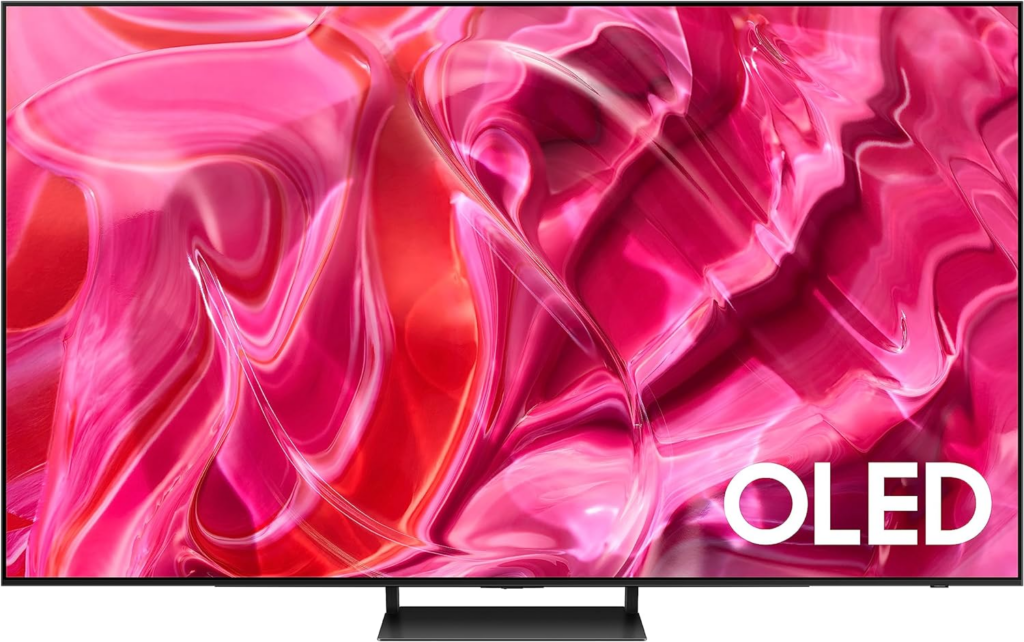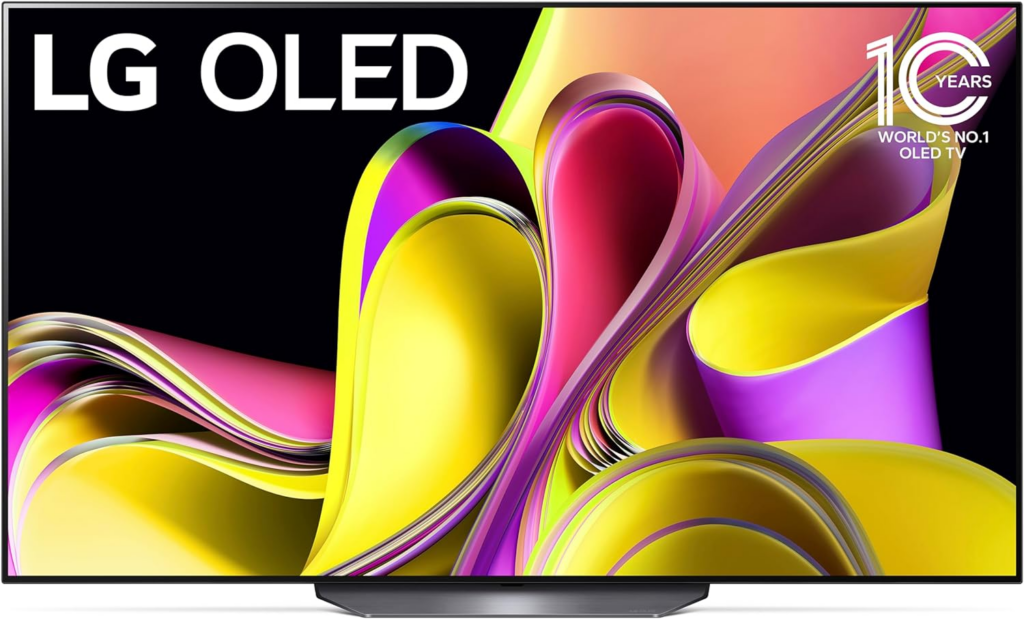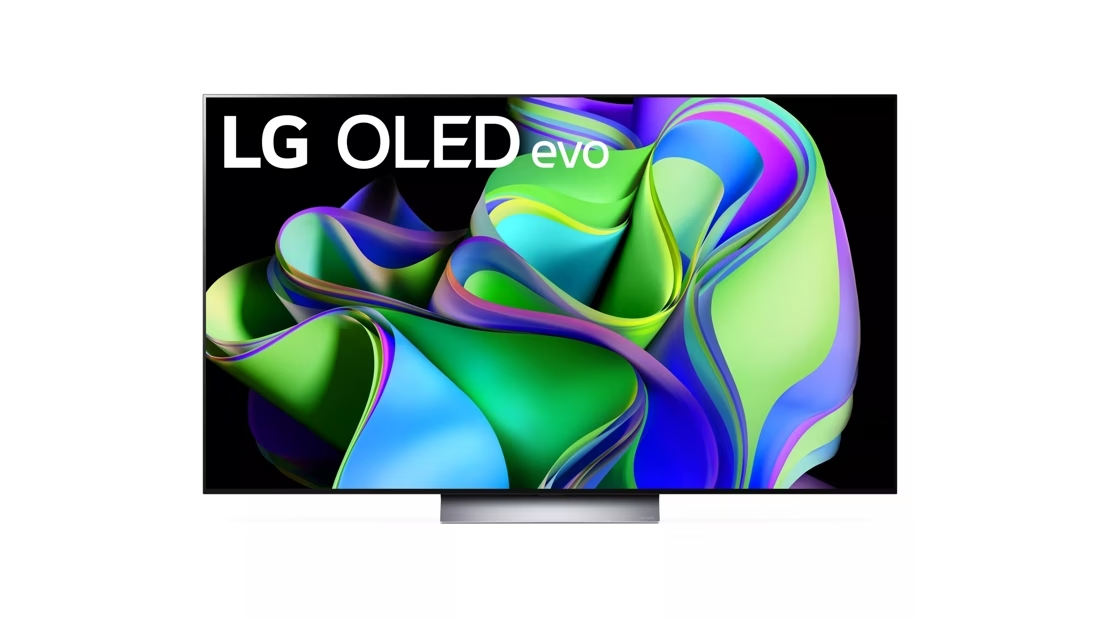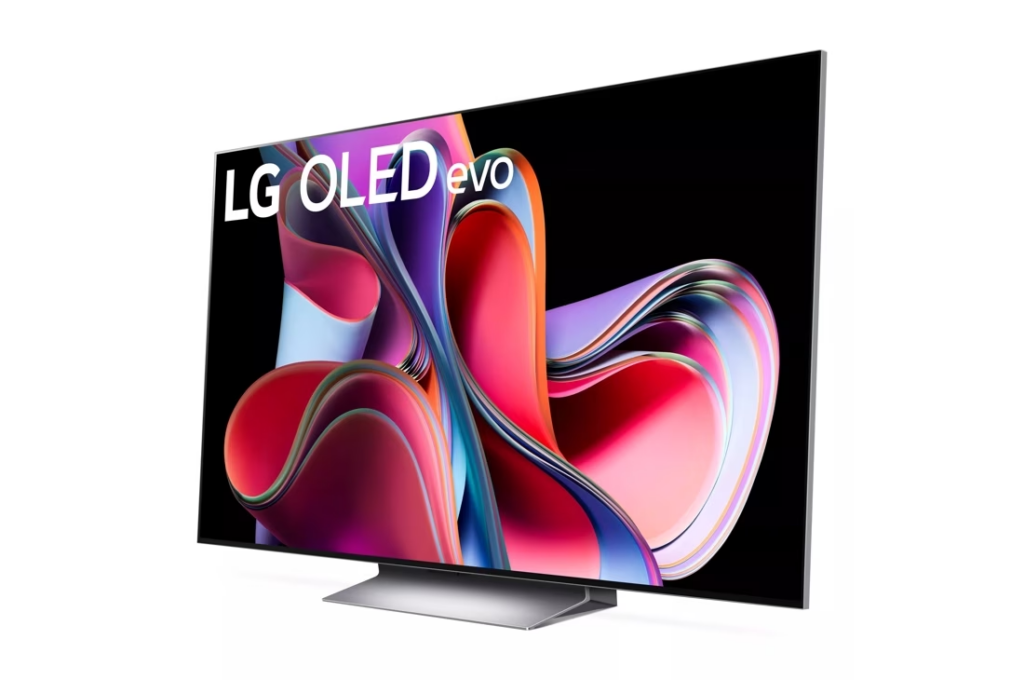The best 65-inch OLED TVs on the market today provide stunning visual quality thanks to the self-lighting pixels that define this type of technology. These pixels provide rich, precise contrast for HDR that even the greatest LCD TVs cannot match. That means they provide a stunning cinematic picture with more information in the darkest regions of the screen than an LCD TV.
With one of the finest OLED TVs, many of which are among the best TVs on the market, you’ll notice a sharper contrast between light and dark, comparable to laser projection in movie theatres – especially if you buy a larger TV, such as one of the best 65-inch or 75-inch TVs. Big TV makers like LG and Sony use OLED technology in their premium TVs. Samsung has invested significantly in OLED TVs, making it our top-ranked option. That’s an entryway.

We’ve been evaluating TVs since long before the first OLEDs hit the market, and we’ve seen the technology improve, become more popular, and inexpensive over time. This guide is based on our product testing and reviews, which compare them. Regular LED and mini-LED TVs are available at the exact pricing.
We’re evaluating them based on image quality, the features they provide, and how they balance with the pricing. OLED TVs produce intense blacks and wonderfully precise colors, while the most recent flagship models offer incredible HDR brightness to compete with mini-LED TVs.
Regarding TVs, we usually recommend going big if you have the space. A 65-inch television may appear excessively large, but I believe it is the “sweet spot” for most living rooms. It isn’t too large to crowd or dominate the room and provides an immersive viewing and gaming environment. Plus, it’s one of the most popular and common TV sizes available, so you’ll have lots of options. To assist you in selecting the greatest 65-inch TV for your living room and budget, I’ve compiled a list of the best models on the market.
Best 65-inch OLED TVs in 2024
Samsung S90C
REASONS TO BUY:
- Bright, contrast-rich images.
- Excellent gaming support.
- Affordable QD-OLED display.
SPECIFICATIONS:
- Screen dimensions: 55, 65, 77, and 83 inches.
- Resolution: 4K.
- Panel type is QD-OLEDS. TV: Tizen.
- HDR: HDR10+, HLG
REASONS TO AVOID:
- No Dolby Vision support.
- The LG G3 and S95C have brighter displays.
- The S95c sounds better.
For most people, our top selection OLED TV is the Samsung S90C. LG’s C-series OLEDs had long held that rank, but the S90C is brighter and has better sound than the LG C3 (#6 on the list) for around the same price, making it a better value. It offers various connectivity options and gaming compatibility, including full 4K 120Hz and variable frame rate graphics on all four HDMI outputs.
The S90C features the same Samsung Neural Quantum 4K CPU as the company’s flagship S95C QD-OLED televisions.

This processor employs 20 neural networks that perform numerous ‘AI-based optimizations on incoming sources, resulting in improved upscaling of lower-resolution material to the TV’s native 4K display.
The picture quality is brilliant, measuring at more than 1,000 nits, resulting in contrast-rich images even by OLED standards.
The S90C may not have the 1,400-nit brightness of Samsung’s flagship S95C, but it still outperforms comparable OLEDs at the same price (the LG C3, for example, has roughly 800 nits). The S90C, like the other OLED TVs on this list, has an image that can be seen from almost any angle.
The Samsung S90C has a fragile panel, particularly at the corners, but it is slightly thicker in the middle due to the input connections/processing box. Nonetheless, the S90C is a stunning display with an outstanding speaker array for such a tiny TV.
LG B3
SPECIFICATIONS:
- Screen dimensions: 55, 65, and 77 inches.
- 4K resolution and OLED panel type.
- Smart TV: webOS 23.
- HDR includes Dolby Vision, HDR10, and HLG.
REASONS TO BUY:
- Impressive picture quality.
- Excellent gaming performance.
- Reasonably priced for an OLED TV.
REASONS TO AVOID:
- Include poor sound quality.
- A cheap-feeling stand.
- Only two 2.1 HDMI connections.
The LG B3 is unquestionably the greatest OLED TV option for those searching for less expensive than the other models listed. Because of its superb overall picture quality, the LG B3 is ideal for watching movies. However, with excellent motion processing and a handy Game Optimizer feature, the B3 is a TV worth considering if you want to play OLED games on a budget. Only two of the B3’s four HDMI ports support version 2.1, but this is only an issue if you’re using the next-generation Xbox and PS5 consoles.

The audio performance isn’t great, but that’s to be anticipated, given the budget, and it’s easily fixed by adding a sound bar. However, the image quality is remarkable, with high contrast, strong HDR, and bold, brilliant colors.
Certain compromises had to be made to keep the price low, and the B3 is less brilliant than the LG C3, much alone the Samsung S90C or the magnificent S95C. However, it provides great specifications at a very reasonable price, including a comprehensive set of HDMI 2.1 gaming features such as 120Hz, Variable Refresh Rate (VRR), and auto low latency mode (ALLM).
Samsung S95C
SPECIFICATIONS:
- Screen dimensions: 55, 65, and 77 inches.
- 4K resolution.
- Panel type QD-OLED.
- Smart TV: Tizen.
- HDR: HDR10, HLG, HDR10 Plus.
REASONS TO BUY:
- Outstanding color and contrast.
- Stunning ultra-slim design.
REASONS TO AVOID:
- Lack of Dolby Vision support.
- Requires adjusting for optimal image quality.
The Samsung S95C has everything you could want in an OLED TV: outstanding colors and contrast, a plethora of gaming capabilities such as 144hz, VRR, ALLM, and AMD FreeSync Premium Pro, all housed in a gorgeous, slim design that looks great on any surface. Overall, the Samsung S95C is a big winner. The functionality comes at a higher price, but this TV is well worth it for those on a budget.
The Samsung S95C’s bright coolers are one of its main selling points. The review stated that “the vibrancy of the S95C’s colors doesn’t stop it from also delivering stellar levels of tonal subtlety and finesse, though, ensuring that not even the most exuberant tone looks flat or cartoonish”.

The ability to balance dazzling HDR highlights and rich dark levels makes it one of the greatest images available. It struggles with motion processing and lacks Dolby Vision HDR compatibility. We recommend changing the presents to get the best image, but the S95C is fantastic for spectacles or simply having an OLED that’s more visible in a bright room during the day. It’s unquestionably one of the greatest TVs available today when you add sound that matches what’s on screen, extensive streaming capabilities, and support for all of the latest HDMI 2.1 gaming features stated above.
LG C3
SPECIFICATIONS:
- Screen dimensions: 42, 48, 55, 65, 77, and 83 inches.
- Resolution: 4K.
- Panel type: OLED.
- Smart TV WebOS.
- HDR: HLG and Dolby Vision capabilities.
REASONS TO BUY:
- Improved smart TV platform.
- Excellent connectivity and features.
REASONS TO AVOID:
- Lower brightness compared to premium OLEDs.
- Currently priced higher than LG C2.
The LG C3 is our top selection if you’re searching for an OLED TV that has cutting-edge capabilities and comes in a wider range of sizes than other OLEDs, ranging from a tiny 42-inch to a huge 83-inch.
The new LG C3 model is slightly brighter than the previous LG C2 model, and it appears to handle contrast better in processing – but it is also more future-proof and easy to use. The smart TV software is amazing and makes locating what you’re looking for much easier. It puts critical settings (that you select) in a Quick Menu, allowing you to easily adjust what the TV does. It has all four HDMI connectors and is fully ready for next-generation gaming, including 4K 120Hz, VRR, and (rarely) Dolby Vision gaming for Xbox.

It also includes new capabilities like Quick Media Switching, which allows external devices to change frame rate or shift between HDMI ports without the traditional TV feeling like the whole thing is going topple over. LG’s new Wow Orchestra feature allows the TV’s speakers to work with compatible LG sound bar speakers rather than being replaced by them.
If you want the absolute pinnacle of smart TV features and want a smaller or larger size than what rivals offer, the C3 should be your choice.
Sony A80L
SPECIFICATIONS:
- Screen dimensions: 55, 65, 77, and 83 inches.
- Resolution: 4K.
- Panel: OLED.
- Smart TV: Google TV.
- HDR: HDR10, HLG, and Dolby Vision.
REASONS TO BUY:
- Superior image quality.
- Above-average built-in sound.
REASONS TO AVOID:
- Low brightness compared to leading OLED TVs.
- Only two HDMI 2.1 ports.
The Sony A80L is the company’s mid-range OLED and a competitor to the LG C3 (albeit it is slightly less expensive in some regions). It has all the OLED image quality elements, including deep and crisp blacks, rich color, and 4K 120Hz gaming compatibility. Sony’s Acoustic Surface Audio+ technology is also included, which turns the screen into a speaker when coupled with a pair of subwoofers for a more powerful sound.
The A80L is a rare TV that does not require a sound bar: it is deafening and employs processing to precisely position sounds to match the image on the screen. The image quality is also outstanding. As our Sony A80L review stated, this TV can produce “pictures that look more richly textured, crisper, denser, more three-dimensional, and more refined” than its mid-range OLED competitors.

Sony’s Cognitive Processor XR is also exceptional at producing sharp yet natural-looking 4K visuals from streamed content and making sub-4K videos seem great. Color, contrast, and shadow detail are all handled effectively. The A80L’s biggest restriction is that it isn’t very bright; moviegoers who watch in a darkened room will love it, but in a bright room, Sony’s TV will be overpowered by contrast-reducing reflections.
PS5 owners, in particular, will find the A80L an excellent gaming TV due to its ‘Perfect for PS5’ capabilities, which boost HDR handling and enable auto mode switching for various game genres while using Sony’s system. Only two of its four HDMI ports support all of the HDMI 2.1 features, which is disappointing given that most LG TVs and Samsung OLED models have four HDMI 2.1 ports.
LG G3
SPECIFICATIONS:
- Screen dimensions: 55, 65, 77, and 83 inches.
- Resolution: 4K.
- Panel: OLED (Micro Lens Array).
- Smart TV: webOS 23.
- HDR includes Dolby Vision, HDR10, and HLG.
REASONS TO BUY:
- Features include exceptional image clarity and brightness.
- Cutting-edge gaming capabilities, and a gorgeous wall-mount design.
REASONS TO AVOID:
- Poor audio quality.
- The Samsung S95C offers greater value.
- Stand is optional.
The LG G3 OLED TV has exceptional picture quality and brightness levels. This is due to the introduction of Micro Lens Array (MLA) technology, which boosts brightness in the LG OLED Evo screen by directing the light closer to the viewer. Combined with LG’s latest generation of image processor, the result is brilliant colors and fine textures that, as we wrote in our review, “work in harmony with deep blacks and dynamic contrast, making the G3’s picture nothing short of sensational.”

The LG G3 is a superb TV in its own right. Still, we believe that the Samsung S95C outperforms it in terms of value while remaining extremely similar – the S95C is slightly brighter across the entire screen, has better sound, and a great One Connect box for neater connectivity. However, the G3 is our top pick for a wall-mountable OLED TV. That is not to suggest that this TV will not sit on a stand, but it comes with a bespoke wall mount designed specifically for it, allowing it to fit flush with the wall, giving it a nicer, more premium feel overall.
Value-wise, there’s no denying that the LG G3 is a high-end TV with a price to match. We believe the gaming capabilities, picture quality, and enhanced brightness make it worthwhile; nevertheless, if wall mounting isn’t a concern, the Samsung S95C is a better overall value.
How to Select the Best OLED TV for You?
OLED TVs are typically premium TVs, which means they all have a specific degree of features, such as 4K resolution, 120Hz refresh rate for gaming, four HDMI connections, and premium smart TV software.
But they are not all the same. Some are significantly brighter than others (up to twice as bright in some circumstances), have more HDMI 2.1 connectors for next-generation gaming, have stronger sound systems, and do not all come in the same size options. Examining what size TV is appropriate for you; to do so, you must first measure the available area. Remember that while a TV that takes up every available space in your living room may appear fantastic, you must consider viewing angles, screen brightness, and whether you can sit a reasonable distance away from the TV to appreciate it properly.
The LG C2 and C3 have the broadest range of sizes of any TV we’ve reviewed, so if you need something smaller, this is a good place to start. Regarding HDR support, we recommend that users choose TVs with Dolby Vision, the most often utilized advanced HDR format on the finest streaming platforms. Samsung TVs only offer HDR10+, a similar technology but not as widely accepted. It’s hardly a deal breaker because Samsung’s TVs don’t support Dolby Vision, but as you can see from our list, we prefer sets that do.
How much do OLED televisions cost?
The price of OLED TVs varies greatly depending on the technologies included with the OLED panel, such as resolution, processor, construction quality, built-in speakers, and so on. However, entry-level devices are often priced at (or, more recently, just around) $1,000 / £900 / AU$1,500.
More mid-tier OLEDs at larger sizes (65 inches and up) can double or triple that amount, particularly with cutting-edge high-end panels. You may also notice that the smaller 42-inch versions of OLED TVs do not offer much of a pricing advantage because manufacturing them that small requires relatively new technology. Therefore, they are not as excellent value per inch.
Frequently Asked Questions (FAQs)
Should I get OLED or QLED?
OLED isn’t the only option for discerning television consumers. Samsung’s competitive QLED televisions excel in brightness, whilst the advent of Mini LED backlights has only enhanced peak light output and overall contrast – areas where OLED has a clear advantage due to its per-pixel brightness control.
It’s a tighter competition than ever, so supplementary qualities for OLED and QLED displays are worth considering. An OLED with a cheap CPU may produce more artefacts and video noise, while a QLED with edge lighting will not benefit from its improved color and contrast. Format or feature support is critical if you’re connecting your TV to a PC, a game console, or a 4K Blu-ray player.
What is the lifespan of an OLED television?
According to LG Display, the makers of the OLED panels used in each of the TVs on the list have a lifespan of approximately 100,000 hours. For most people, that’s about ten years of TV watching, exceeding most LED-LCD televisions’ 40,000 to 60,000-hour lifespans. However, OLED TVs might develop burn-in when a static image is left on the screen for an extended period, so change the channel every few days.
What are the best alternatives to OLED televisions?
OLED is widely regarded as the current premium TV technology. Though long hampered by high price points, a rush of lower-cost mid-range OLEDs and smaller panel sizes has helped push OLEDs closer to the mainstream market.
Samsung and Sony’s current TV lineups include QD-OLED hybrids (which combine OLED panels with quantum dot technology, leveraging the former’s self-emissive properties and the latter’s color enhancements) – we have a separate guide to whether you should buy a Samsung OLED TV if you want to learn more about them.
There are two options for those with the money: a high-end OLED TV and Micro LED, a self-emissive panel technology that Samsung has leaned into in recent years but has proven difficult to offer at a reasonable price or in mainstream sizes.
It’s a more sophisticated picture than just OLED, but for deep blacks and true-to-life color at a size that can fit into the average living room, OLED may still be the best option.
Is burn-in a concern in OLED televisions?
Burn-in, screen burn or permanent picture retention is a visual artefact that occurs when a television shows the same thing in the same location for an extended period. It happens on certain OLED TVs, but manufacturers have devised numerous techniques to reduce the likelihood of it happening on yours. There are three major ways that OLED TVs can reduce the risk of burn-in. They can utilize visual analysis to identify static pictures, such as TV channel logos, and slowly dim them.
They can softly change the image by a few pixels, something your OLED is probably currently doing without you noticing. There’s also a more brute-force approach, in which the TV immediately reduces the brightness of the entire display when it detects a bright and potentially burn-in item. The latter is the least popular since, if not properly implemented, it may be rather dramatic and irritating. Modern TVs using this technology, known as ABL (Auto Brightness Limiting), are much more subtle about it than older models.
Finally, you can adopt the DIY method. Some TVs’ default options, such as Vivid Mode, can be quite bright, so altering or utilizing less blazing settings will make your eyes happy while lowering the chance of burn-in. ultimately, burn-in is all about heat, as the term implies. And the best approach to lessen the risk, if not eliminate it, is to improve heat management in OLED televisions. And manufacturers are doing exactly that. Panasonic, LG, Sony, and other manufacturers use innovative heatsink technology and heat dissipation architecture in their OLEDs.











